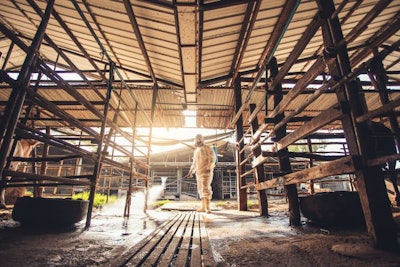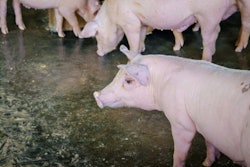
USDA wants transparency and cooperation with pig producers to prevent and prepare for African swine fever
Communication and biosecurity are two of the most important elements to preventing the entry of African swine fever (ASF) virus into the United States.
That was the message from Jack Shere, deputy administrator for veterinary services at the U.S. Department of Agriculture’s (USDA) Animal and Plant Health Inspection Service (APHIS) during a webinar October 13, part of the department’s ASF Action Week.
“The more that we can spread the word about this deadly virus and the clinical signs and what to expect, the better chances we have at preventing it or slowing its spread should it reach the United States,” Shere said. “Anybody that has any type of swine – be that a pot-bellied pig, a show pig that they’ve raised for the county fair, or the large producer – everybody’s at risk, and everybody needs to take the same steps to prevent this disease from getting to them.”
Shere explained why biosecurity is so vital to preventing the spread of ASF, and steps that should be taken on farm.
“This is a contact disease,” he said, adding that it can be carried and spread by equipment, people and clothing. “That biosecurity has to extend to all equipment and make sure it’s clean and disinfected, making sure that there’s a change of clothes when (workers) go in to work with their pigs, and that they don’t bring anything to the farm, they don’t visit another farm.”
This message is not new, but remains important, he said.
“I know that you get tired of hearing it, but protect yourself … protect your farm. It’s your livelihood. It’s how you make a living,” Shere said.
Assistance in improving biosecurity
USDA representatives can help swine farmers improve their on-farm biosecurity, and Shere said he would like to hear from farmers more often.
“If you have questions about your biosecurity and what you could do, there are people that would be willing to come out and look at your farm and help you, because you’re there every day – you see it every day, and a new set of eyes sometimes helps. Our biosecurity experts can help you with that and bolster that,” he said. “And I’ll be honest with you, we don’t get enough calls on swine activity. I think last year there were only 25 investigations in swine for foreign animal disease. And that’s just not enough when you look at how many swine are being raised.”
Farmers and farm workers know their herd better than anyone, so Shere said they should not hesitate to reach out if they notice any changes in their pigs.
“People know their hogs,” he said. “They see them every day, they look at them and they’re the experts. If they see something different, don’t hesitate to pick up the phone and call your state or federal (USDA) office and get a foreign animal disease diagnostician out there. Call your vet. Or, if you are a vet, call us and let us help. That’s what we’re here for. We want to make sure we find this, if it comes, as quickly as possible. And the only way we can do that is by having the industry work closely with us and record what they see.”
That partnership – between producers and government – is key to prevention and preparedness, Shere said.
“I promise you, there’s no question that we don’t want to answer. We want to be totally transparent,” he said. “The more you know about this disease and how the disease works and how you’ll be treated should you get this disease, the better prepared we’re going to be in working together. And this is about working together, because there is no one agency in the government or at the state that’s going to be able to handle this. We need three-way unification – the producers, the state and the federal government – to work on this if we get it.”
Challenges identifying ASF
Because the ASF virus has evolved and its symptoms are similar to several other swine diseases, Shere said it may be difficult to identify quickly.
“The virus has changed. It was a highly virulent virus to start with. It has adapted and it’s changed and it’s now less virulent,” he said. “We have now a chronic form where the signs are more mild in the pigs and pigs will eventually die, and it’s probably more serious because it’s not as easily detected and it can spread more easily in the chronic form.”
A common misconception about the ASF virus, Shere said, is that if pigs aren’t dying, they must not have ASF.
“This disease is changing – remember that this disease has 20 different types,” he said. “So, it has 20 different ways that can show up on your farm. Ones that are easy to discover are the ones that are highly virulent and kill the pigs rapidly. The ones that are probably more dangerous to eradication are the ones that don’t have those clinical signs and you don’t see the pigs die. They may get sick, go off feed for a while, they may have joint swellings, they may seem to not want to move around, but they don’t die rapidly.
“So, the misconception is that a pig can survive or get well if it’s exposed to ASF. The current way – the only way – that we can eradicate this disease is to test and remove the positives and protect the negatives by keeping the positive pigs away.”


















